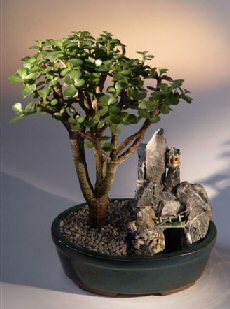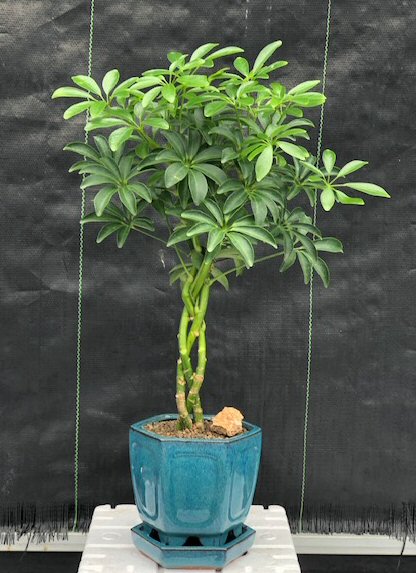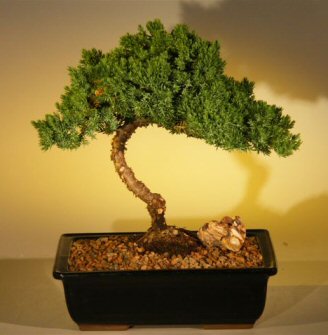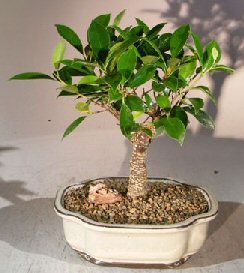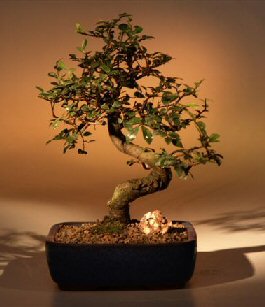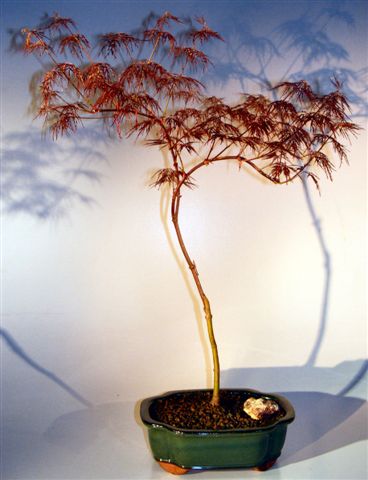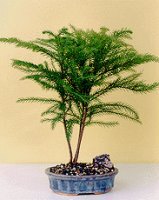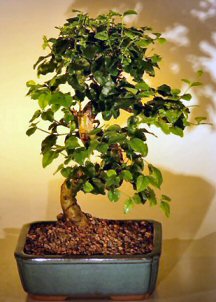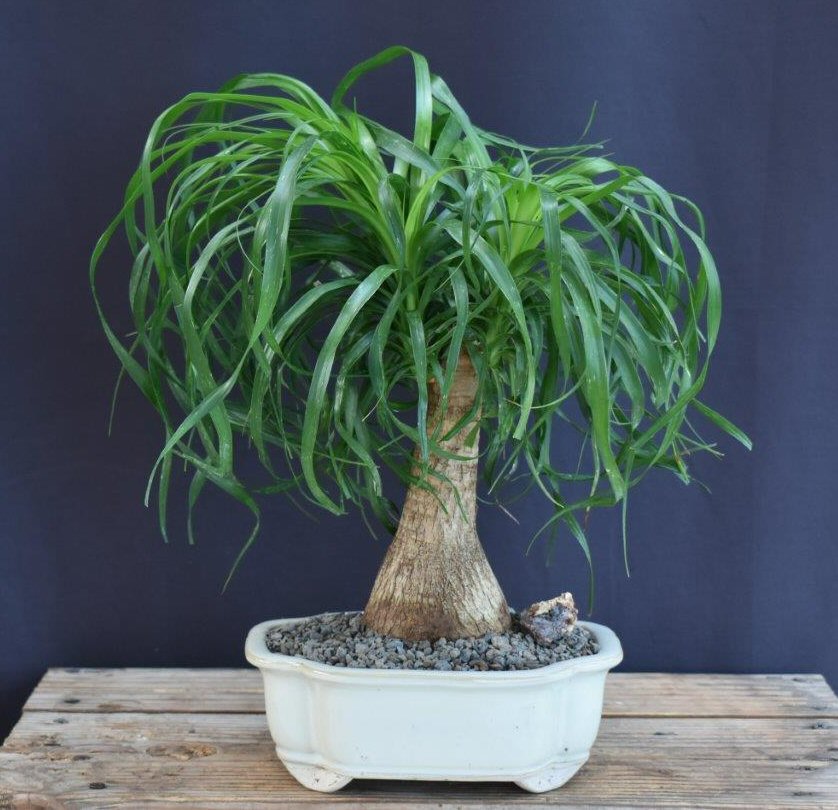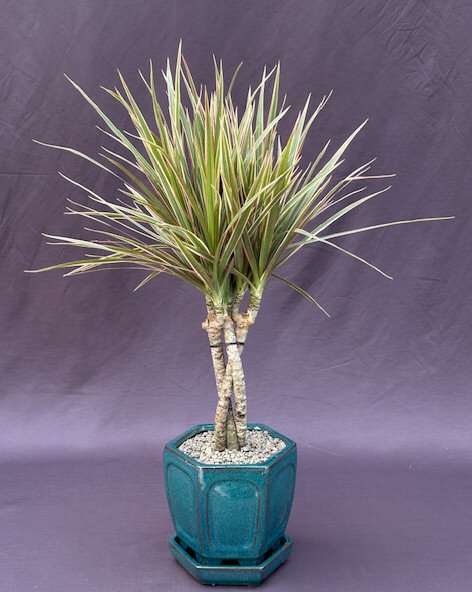If you’ve ever seen an artfully designed and lovingly tended bonsai planting, you likely felt a sense of peacefulness and harmony with nature.
So much so that you wanted to enjoy the beauty of bonsai for yourself! But feeling unsure of how to get started and what you’re committing to is anything but peaceful.
Not to worry: Getting your bonsai garden started is easier than you might think!
In this article, we’ll establish a brief definition of what bonsai is. Then, we’ll take a look at the 10 best bonsai trees for beginners and basic characteristics of each species.
Finally, you’ll learn about a reliable source for healthy bonsai trees and quality supplies to get you started.
I’ve hand-selected a few trees that aren’t on some people’s lists for “newbies”, but trust me, they’re perfect for your first bonsai tree! Here’s a quick breakdown of each tree we’ll be talking about:
Bonsai Tree: | Benefit for Beginners: |
Baby Jade | Requires less watering and thrives indoors |
Hawaiian Umbrella | Tolerates varied light and soil conditions |
Juniper | Hardy, easy to grow, and requires minimal care |
Ficus | Fast-growing, resilient, perfect to practice pruning |
Chinese Elm | Robust, tolerates indoor/outdoor growth and frequent pruning |
Japanese Red Maple | Resilient to wiring/pruning and beautiful color |
Norfolk Island Pine | Slow-growing and easy to maintain |
Flowering Ligustrum | Hardy and tolerates varied environmental conditions |
Ponytail Palm | Thrives in varied conditions and requires less watering |
Dracena Marginata | Responds well to training and trimming |
Ready to dive into the world of bonsai trees for beginners? Let’s go!
Table of Contents
What is Bonsai?
Bonsai is the ancient art of training and caring for trees in a miniaturized form. Taken from a combination of two Japanese words, the term “bonsai” translates to “potted tree.”
One of the striking aspects of bonsai trees is that they look exactly like their full-size counterparts in every way except size.
Many types of trees that grow tall and spreading in nature can be trained to grow in a container, whether indoors or outdoors.
(If you want to learn more about bonsai containers, stop by our best bonsai pots article, where we take a deeper dive into some common questions and show examples of our favorite pots!)
In addition to strategic branch and root trimming to control the overall growth, some bonsai gardeners also use wire to train the tree trunks to take on unique shapes.
Bends, twists and braiding multiple tree trunks together are just a few methods that bonsai artists may use to create their masterpiece.
Over the centuries, people have come to associate symbolic meanings with certain bonsai trees. In some cultures, the gift of a bonsai is also a wish that the recipient will have the abundance, friendship or other quality that the tree symbolizes.
Now that you know a little more about what bonsai is, let’s look at some trees that are ideal for beginners.
NOTE: All the products we’re covering below are from Bonsai Boy of New York, but they’re no means the only place to shop for bonsai tree. We just believe Bonsai Boy is one of the best websites out there that specialize in all things bonsai (they’re our personal favorite though!)
Plus, they have some of the best bonsai tree prices!
Best Bonsai Trees for Beginners
1. Baby Jade
Baby Jade Bonsai Tree
Stone Landscape Scene
(portulacaria afra)
A baby jade tree is a lovely, easy-care bonsai that also symbolizes unity between friends and good fortune in life.
A native of sandy soil in South Africa, jade leaves have a unique succulent quality, meaning that they can absorb and retain moisture. Your jade bonsai trees will be happiest when you water infrequently and allow the soil to dry out in between.
This characteristic makes jade a great low-maintenance choice for new bonsai gardeners. Also, jade thrives when grown indoors, so it’s a great option if you lack outdoor space.
Jade bonsai trees produce a dense canopy of small, dark-green leaves. The older leaves will fall off and be replaced by new foliage, so jade falls into the semi-evergreen tree category.
- Plant Type: Semi-evergreen
- Light Requirements: Bright light
- Watering Requirements: Prefers dry, well-draining soil
- Jade Bonsai Tree Symbolism: Good luck, prosperity, friendship
2. Hawaiian Umbrella
Hawaiian Umbrella Bonsai Tree
Braided Twist
(Arboricola Schefflera ‘Luseanne’)
Hawaiian umbrella trees have a well-deserved reputation for being one of the easiest bonsai trees for beginners.
They are tolerant of various light conditions, and they grow well in a variety of soil types. And while they appreciate regular moisture, they still manage to thrive even if you forget to water them once in a while.
Not only are Hawaiian umbrella trees easy to care for, they’re also beautiful! Abundant, deep-green leaves stay vibrant all year round, and the foliage tends to spread out into a domed umbrella shape.
Your Hawaiian umbrella tree will happily grow alone in a pot, and they also look fantastic when planted in groupings. With the proper training, the slender trunks lend themselves well to braiding.
A related subspecies is the Golden Hawaiian Umbrella tree. This bonsai has the same low-maintenance characteristics of the traditional version with the addition of colorful bands of gold on the leaves.
- Plant Type: Evergreen
- Light Requirements: Bright light
- Watering Requirements: Prefers regular moisture but tolerant of irregular watering
- Hawaiian Umbrella Bonsai Tree Symbolism: Unkown
3. Juniper Bonsai
Juniper Bonsai Tree – Medium Extra Size
(juniper procumbens ‘nana’)
A striking, spreading canopy, fascinating bark texture and minimal care make juniper a favorite with bonsai enthusiasts across the globe. In many cultures, juniper also symbolizes purification and protection.
Juniper bonsai trees have short, dense bristles and twining lower branches, giving the tree a compact, solid appearance. The rough bark adds visual interest, and the trunk usually responds well to training, taking on graceful curves and S-shapes.
In its natural form, juniper is a common evergreen hedge plant that grows well in a variety of environmental conditions. A juniper bonsai retains many of the hardy qualities of its naturally growing counterpart, and it is one of the easiest bonsai trees to grow.
Juniper thrives in an outdoor environment (but you can display your bonsai indoors for a few days from time to time.) It prefers partial afternoon shade and morning sunlight during the spring, summer and fall, and cool but sheltered conditions during the winter dormant phase.
- Plant Type: Evergreen
- Light Requirements: Partial outdoor sunlight
- Watering Requirements: Place your bonsai where it will get rain, and give supplemental water when the soil feels dry
- Juniper Bonsai Tree Symbolism: Power, purity
4. Ficus Bonsai Trees
Ficus Retusa Bonsai Tree – Medium
(Ficus Retusa)
Ficus is a member of the fig tree family, and it is a hardy, adaptable genus often symbolizing an abundant life rich with new beginnings.
There are a wealth of Ficus subspecies that flourish as bonsai. Here are just a few more to consider, each with their own unique qualities:
- Willow Leaf
- Green Island
- Ginseng
- Oriental
Ficus bonsai trees produce a dense layer of deep green, semi-glossy leaves on delicately spreading branches. The trunk also responds well to training, and many bonsai gardeners achieve a stunning S-shape.
Ficus is ideal for new bonsai gardeners thanks to its resilient nature and easy care. It produces new growth rapidly, so you’ll get plenty of practice in trimming and pruning. But the new foliage is a lighter color, so it’s easy to identify, even as a beginner.
Ficus benjamina is great option for bonsai beginners. To learn more details, visit our Ficus benjamina bonsai post!
- Plant Type: Evergreen
- Light Requirements: Bright light
- Watering Requirements: Water generously when the soil feels dry
- Ficus Bonsai Tree Symbolism: Fresh beginnings, unity and abundance
5. Chinese Elm Bonsai
Chinese Elm Bonsai Tree – Medium
Curved Trunk Style
(Ulmus Parvifolia)
A native tree in Eastern Asia, a Chinese elm bonsai tree is often a symbol for the peaceful, quiet form of love and harmony between people.
Chinese elm sprouts compact, dark-green leaves with an interesting lustrous surface finish. It is a semi-deciduous tree species, meaning that it loses some of its foliage seasonally.
When allowed to grow naturally, Chinese elms can reach heights of 60 feet. These trees are also highly tolerant of pruning and wiring, making them an excellent choice for bonsai.
Chinese elm’s hardy nature allows it to grow happily either indoors or outdoors; just make sure it gets plenty of bright sunshine.
Thanks to these easy-going characteristics, Chinese elm is a perfect bonsai tree for beginners.
- Plant Type: Semi-deciduous
- Light Requirements: Bright light
- Watering Requirements: Prefers moist soil
- Chinese Elm Bonsai Tree Symbolism: Peace and love, harmony
6. Japanese Red Maple
Japanese Red Filgree Lace Maple Bonsai Tree
(acer palmatum dissectum)
With its beautiful color and delicate leaves, the Japanese red maple is popular in both full-size and bonsai iterations. Many people also believe that Japanese red maples are symbolic of peace and love.
Japanese red maples are well-suited to bonsai thanks to flexible branches and resiliency to wiring and pruning. These qualities also make this bonsai a great choice for novices.
The primary draw of a Japanese red maple is its gorgeous foliage. The leaves start out as a vibrant green in the summer, then take on stunning shades of gold, orange and deep red during the fall.
While most bonsai trees will happily live indoors, Japanese red maples are best for adding color to outdoor bonsai plantings. However, you can bring your Japanese maple inside to enjoy its fall foliage for a few days at a time.
- Plant Type: Evergreen
- Light Requirements: Partial shade
- Watering Requirements: Water regularly
- Japanese Red Maple Bonsai Tree Symbolism: Beauty, serenity
7. Norfolk Island Pine
Norfolk Island Pine-Medium
(Araucaria Heterophila)
The Norfolk Island pine is native to just one place on the earth- remote Norfolk Island, located between Australia and New Zealand in the South Pacific ocean. But despite its obscure origins, Norfolk Island pine has become a popular houseplant around the world.
Not surprising for a semi-tropical species, Norfolk Island pine tree prefers temperatures over 50 degrees F and lots of bright sunlight. The best spot for your bonsai tree will be a sunny, south-facing windowsill in a warm room.
Even though its natural height can be up to 200 feet, the Norfolk Island pine tree has a slow growth rate, at about 3 to 6 inches per year.
This makes it easy for beginner bonsai tree gardeners to keep up with the trimming and repotting necessary to keep this tree in miniature form.
- Plant Type: Evergreen
- Light Requirements: Bright light
- Watering Requirements: Water sparingly when the soil surface feels dry
- Norfolk Island Pine Bonsai Tree Symbolism: Unknown
8. Flowering Ligustrum
Flowering Ligustrum Bonsai Tree with Curved Trunk-Medium
(ligustrum lucidum)
Flowering ligustrum belongs to the privet family of landscape shrubs and hedges. The ligustrum varieties most often seen in bonsai are the glossy privet and the Chinese privet subspecies. When allowed to grow naturally, these varieties can be as tall as 30 feet.
Flowering ligustrum produces white blossoms in the spring and summer, and dark blue berries in the fall. Glossy privet, in particular, produces attractive dark green leaves with a high-shine finish.
Ligustrum has an extremely hardy nature. In fact, in some areas of North America, Chinese privet is considered to be an invasive pest that’s almost impossible to eradicate!
Thanks to its resilience and tolerance for a variety of environmental conditions, flowering ligustrum is a great starter for your bonsai garden.
- Plant Type: Evergreen
- Light Requirements: Bright light to partial shade
- Watering Requirements: Use well-draining soil and water regularly
- Flowering Ligustrum Bonsai Tree Symbolism: Unkown
9. Ponytail Palm
Ponytail Palm – Medium
(beaucamea recurvata)
Native to Central America and the southern regions of Mexico, the ponytail palm thrives in a variety of light and soil conditions.
The vibrant green leaves have an elongated shape and tend to curl at the tips. This gives your bonsai an interesting, full shape that closely resembles a ponytail hairstyle.
The ponytail palm also goes by the name “elephant’s foot,” and it’s not hard to see why! The wide base looks just like an actual elephant’s foot, and the bark is also rough and wrinkled like elephant skin.
But this trunk structure is more than just a striking visual feature. The extra wood also acts as a water reservoir, helping the tree survive extended periods of drought.
So if you’re worried that you may forget to water your new bonsai tree regularly, you’ve got some extra wiggle room with a ponytail palm.
- Plant Type: Evergreen
- Light Requirements: Tolerant of bright or low light environments
- Watering Requirements: Prefers dry soil with good drainage
- Ponytail Palm Bonsai Tree Symbolism: Unkown
10. Dracena Marginata
Dracena Bonsai Tree
Braided Trunk – Variegated
(Dracena Marginata)
With the alternative name Madagascar Dragon Tree, Dracaena marginata may be the perfect choice if you appreciate interesting name origins!
The elongated, pointy leaves give Dracena marginata a tropical appearance. For a little extra color interest, the leaves also have a delicate edging of white or red. (Perhaps the red striping is where the dragon connection comes in!)
Dracena marginata has a long, thin trunk that somewhat resembles that of a standard palm tree. Because of this trunk structure, these bonsai trees looks amazing when grown in groupings with trained braided trunks.
Full-size Dracena marginata is a common houseplant that can reach about 6 feet in height. However, it also responds well to training, trimming and pinching, making Dracena marginata a great bonsai tree for beginners.
- Plant Type: Evergreen
- Light Requirements: Bright light
- Watering Requirements: Allow soil to dry out between regular watering
- Dracena Marginata Bonsai Tree Symbolism: Unknown
Which Bonsai Tools Do You Need as a Beginner?
Having the right tools makes a big difference in the quality and ease of your bonsai care.
For instance, you could try using a pair of regular scissors to prune your bonsai. But this strategy will leave you struggling to make clean cuts, and your bonsai can end up scarred, severely weakened or even dead.
As you can see, it’s pretty important to use the right tools for the task at hand! Let’s go over the ones you’ll need to take good care of your first bonsai:
Concave branch cutter. You’ll need a concave branch cutter to make clean, easily-healing cuts to your bonsai’s limbs and branches during structural pruning.
Spherical knob cutter. A spherical knob cutter safely removes knobs or young shoots from your bonsai’s trunk.
Bonsai wire cutters. Not to be confused with standard wire cutters, bonsai wire cutters have a protective rounded tip. Even though you probably won’t be wire-training your bonsai as a beginner, some trees come wired to their pots. You’ll need to snip the wire to remove your bonsai for repotting.
Bonsai shears. With their long, thin shape, bonsai shears help you clip away buds and new foliage without disturbing the rest of your tree.
Single point root rake. A single point root rake helps you safely and gently dislodge your bonsai for repotting. You will also use your root rake to disentangle small roots and remove excess soil.
Moisture meter. A soil moisture meter isn’t completely necessary, but it is helpful when you’re learning how to water your bonsai properly.
To make things a little easier, you may want to go with an all-in-one tool set. These sets contain everything you need to start your bonsai journey, and you can add more specialized tools as you gain experience over time.
“The best time to plant a tree was 20 years ago. The second best time is now.“
-Chinese Proverb
Characteristics of a Beginner-Friendly Bonsai Tree
Not all bonsai trees are created equal when it comes to care requirements or skill.
So how can you choose one that’s within your beginner’s scope at the start of your bonsai journey? Look for these 4 characteristics:
1. Tolerates Inexperienced Pruning
No bonsai tree will do well if you prune it improperly or cut off too much, but some trees are far more resilient than others.
While you’re in the learning phase of bonsai care, you’re bound to make a few mistakes when it comes to pruning. Choosing a bonsai tree species that recovers easily can save you from the guilt of a dead bonsai tree.
2. Not Too Sensitive to Moisture Levels
Certain bonsai tree species can grow happily in soil that runs the gamut from dry to moist.
These easy-going bonsai trees are fun to have around for anyone, but they’re especially ideal for beginners just establishing a care routine.
3. Looks Attractive Right From the Start
When you don’t have any bonsai experience to fall back on, it’s harder to keep the long-term vision in mind.
For instance, buying a pre-bonsai tree means that you’re starting out with nothing more than a baby plant. It won’t look like the bonsai of your dreams without some tender loving care, and achieving that goal usually requires time and experience to achieve.
On the other hand, buying an established, trained bonsai is a wise move as a novice.
A tree that already looks attractive is a powerful incentive for learning the techniques to keep your bonsai thriving. And it’s also a nice dose of instant gratification!
4. Adaptability
Your local climate or home environment may be a far cry from the growing conditions your bonsai tree has become accustomed to.
You’ll have an easier time caring for a tree species that can adapt readily to a new environment.
This is particularly critical when you’re a new bonsai gardener who may not recognize early signs of plant distress.
Final Thoughts
Caring for a bonsai tree not only produces a beautiful living piece of art, but it’s also a relaxing and rewarding hobby. This principle holds true both when you’re beginning your bonsai journey and after you’ve gained years of experience.
But making sure that you get started the right way is a critical first step. The best bonsai trees for beginners have forgiving, easy-going natures, substantially raising your confidence and your chances for success.
And who doesn’t want that? What’s more, all the bonsai trees we’ve covered here are beautiful specimens, so you can enjoy your bonsai gardening journey right from the start.
Have you ever grown bonsai trees? What was your experience like? In your opinion, what’s the best bonsai tree in our list above? Do you have any questions or helpful bonsai tips to share?
The comments are open, and we’d love to hear from you!


